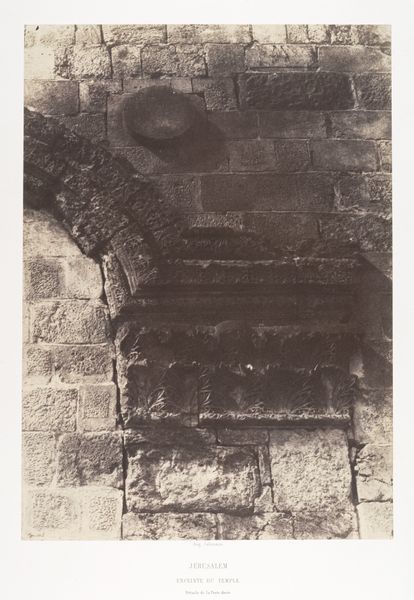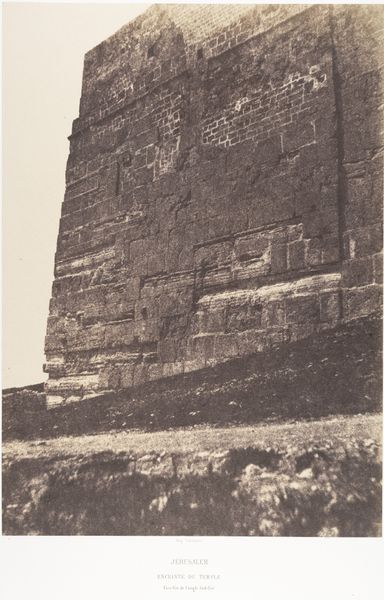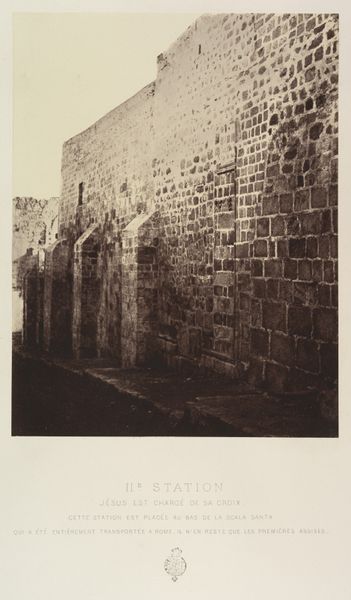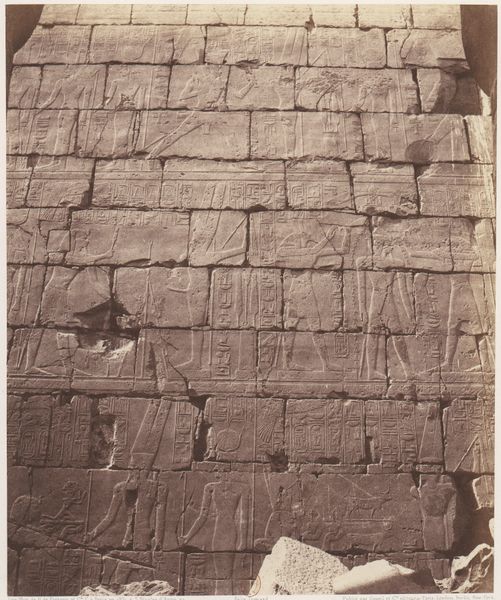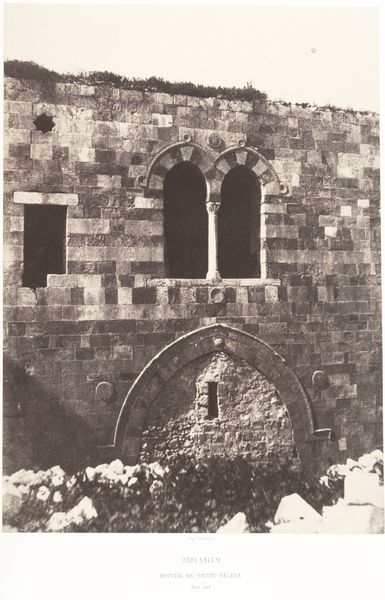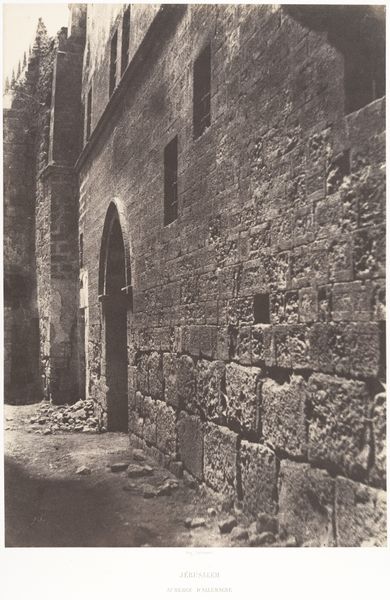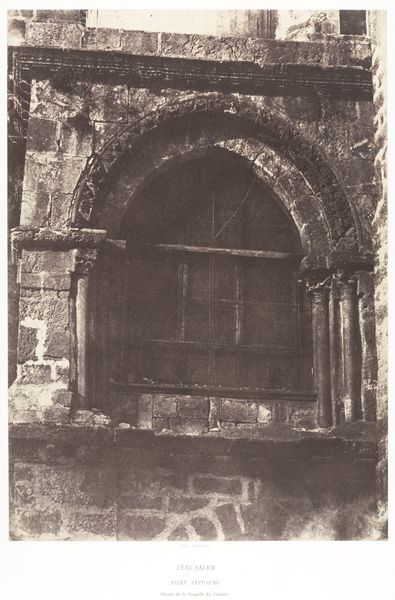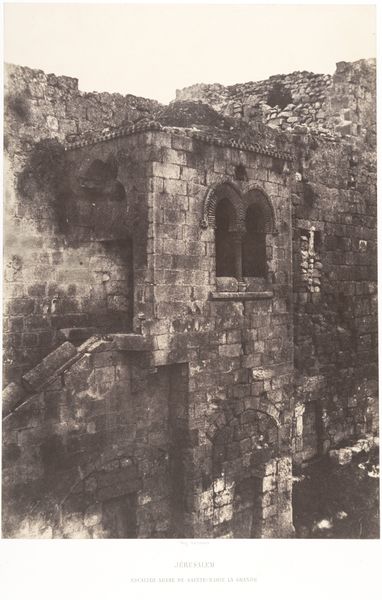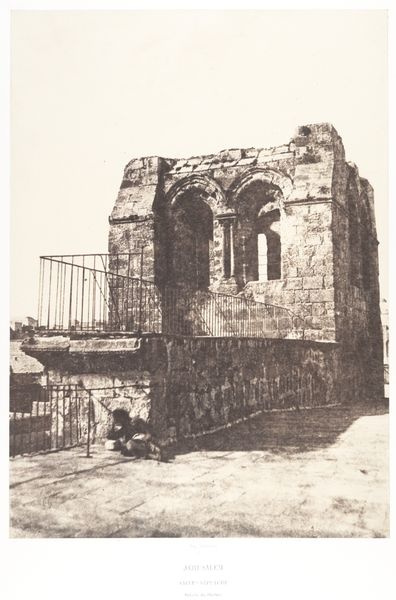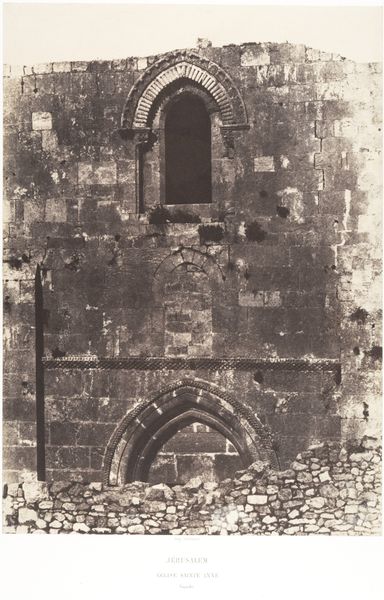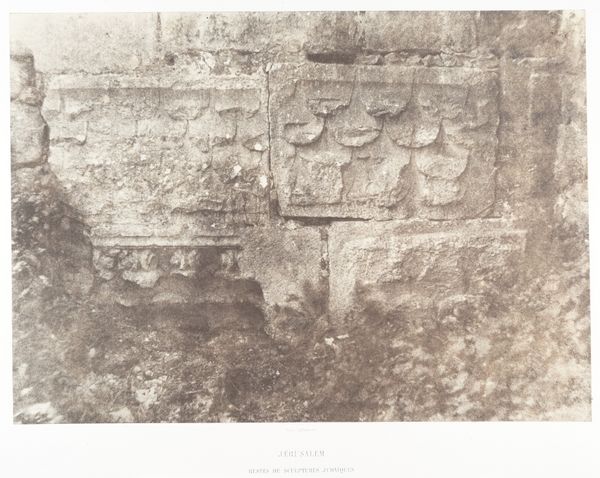
Jérusalem, Enceinte du Temple, Poterne de Josaphat 1854 - 1859
0:00
0:00
print, photography, site-specific, albumen-print, architecture
# print
#
landscape
#
photography
#
ancient-mediterranean
#
arch
#
site-specific
#
islamic-art
#
albumen-print
#
architecture
Dimensions: Image: 32.3 x 23.2 cm (12 11/16 x 9 1/8 in.) Mount: 60 x 44.7 cm (23 5/8 x 17 5/8 in.)
Copyright: Public Domain
Editor: This photograph, taken by Auguste Salzmann between 1854 and 1859, captures a section of Jerusalem's Temple Mount, specifically the Poterne de Josaphat. It’s an albumen print, so the tones are very muted. The wall looks extremely old and weathered. What can you tell me about the social context in which Salzmann was creating this image? Curator: This photograph, along with others in Salzmann’s project, is significant as it emerged from a specific historical and political moment. He was commissioned to document the Holy Land in a period of intense European interest and colonial ambition in the region. There was a prevailing belief that photography could provide objective, scientific evidence, particularly in archaeological and religious contexts. Do you think that expectation held up? Editor: I don’t know if any photograph can be truly objective, especially considering who commissioned and funded it. There must have been specific expectations of what Salzmann was to document. Curator: Precisely. His images were seen as offering an authentic visual record that could support or challenge existing narratives about the region. Salzmann's work then entered the public sphere, exhibited and reproduced, where they shaped European perceptions of Jerusalem. How do you think viewers in Europe at the time would have interpreted the seemingly austere appearance of the Temple Mount as seen in this photo? Editor: I imagine they would have interpreted it through the lens of their own cultural and religious biases. The image, absent of human figures, seems to present a landscape marked by historical importance. That austere look might have reinforced ideas about the exotic 'other', contrasting it with the increasingly industrialised Western world. Curator: Indeed. It prompts us to question the ways in which the act of photographing – the choices of framing, subject matter, and dissemination – always reflects a specific cultural, historical, and even ideological position. Editor: So, what seems like a simple photograph actually has layers of socio-political complexity embedded within it. I learned a lot!
Comments
No comments
Be the first to comment and join the conversation on the ultimate creative platform.

